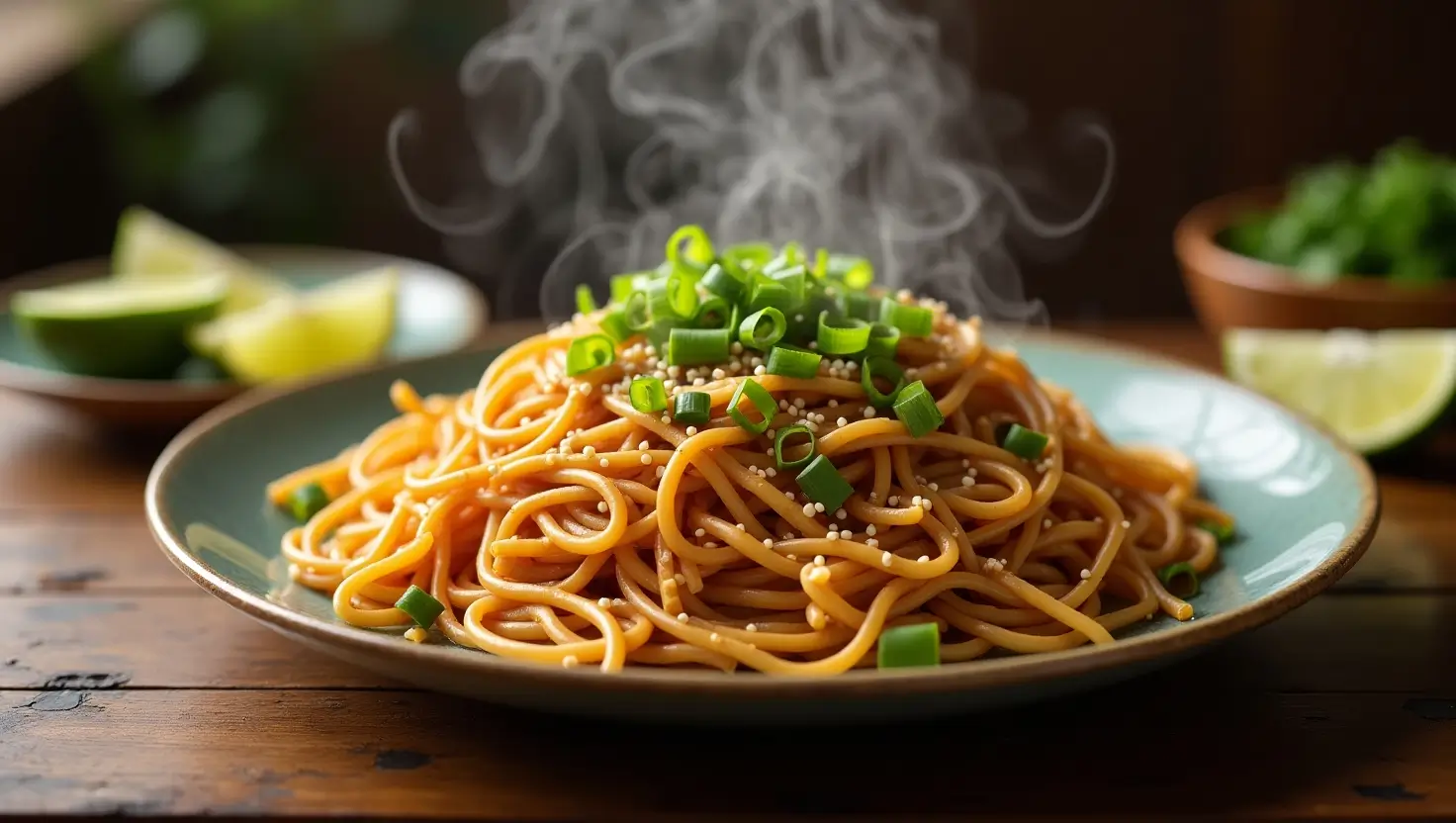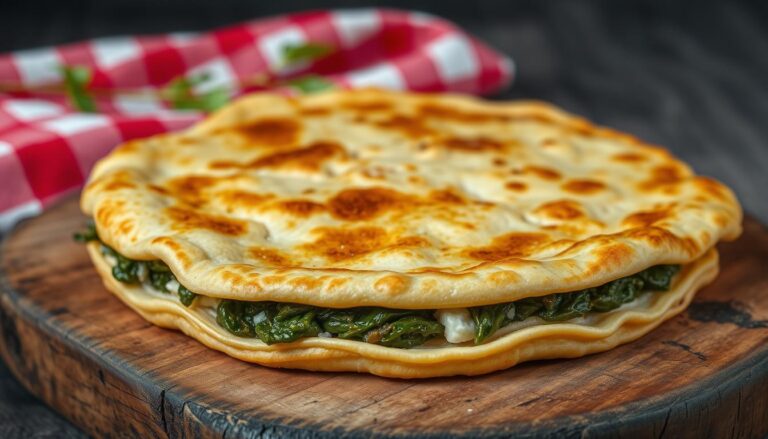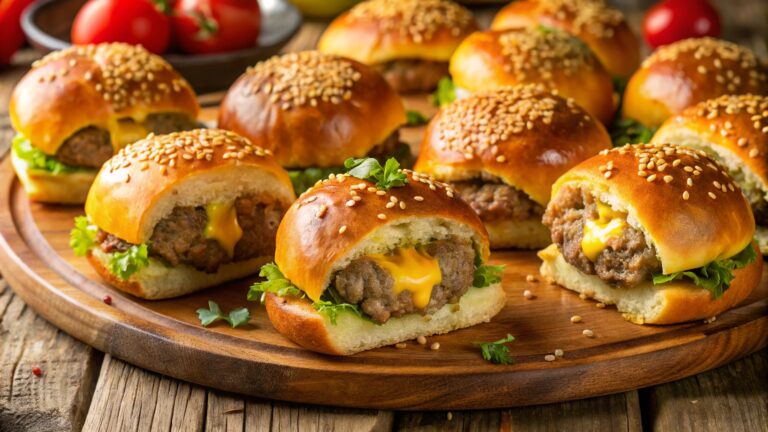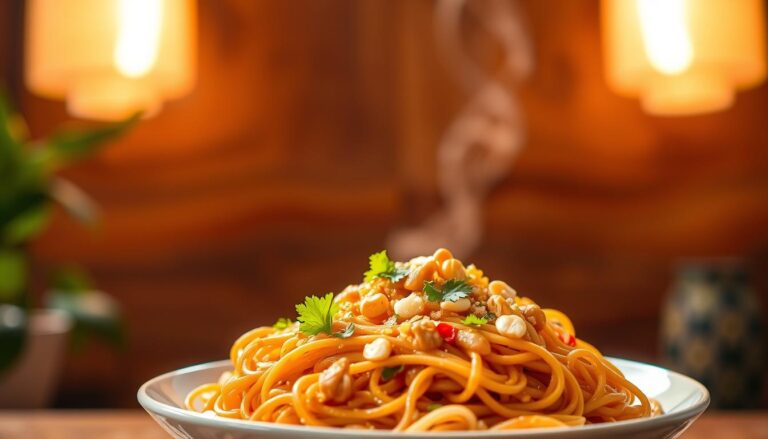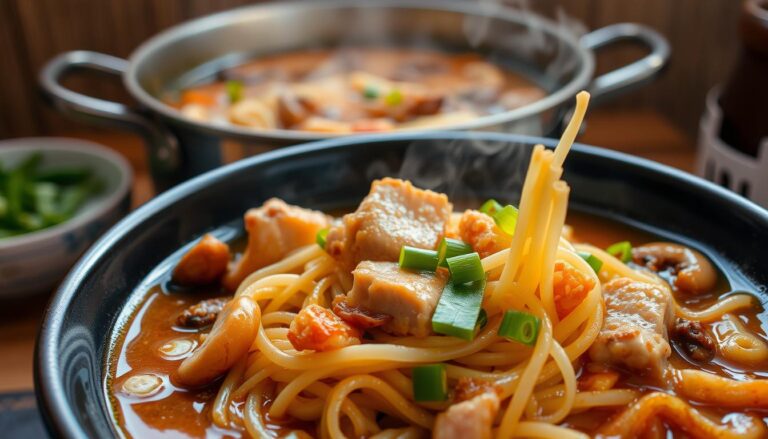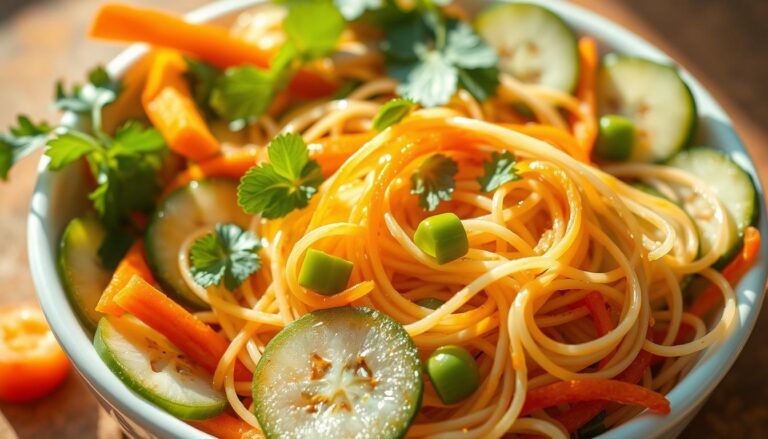Brine For Smoked Salmon: Why Chefs Love Hokkien Noodles

The first time I tasted authentic Hokkien noodles, it was like discovering a culinary treasure. The rich, silky strands took me straight to the bustling street markets of Southeast Asia. They awakened my senses with their incredible depth of flavor. These beloved Hokkien noodles aren’t just a meal – they’re a cultural experience you can recreate right in your own kitchen.
Hokkien noodles represent more than just a popular Asian dish. They’re a celebration of tradition, crafted with techniques passed down through generations. Whether you’re a curious home cook or an adventurous food lover, these noodles offer an exciting gateway into authentic Asian cuisine that’s both simple and sophisticated.
Ready to embark on a delicious journey? This guide will walk you through everything you need to know about preparing mouthwatering Hokkien noodles that will impress your family and friends.
Key Takeaways
- Hokkien noodles offer an authentic taste of Southeast Asian cuisine
- These noodles are versatile and easy to prepare at home
- Understanding their origins enhances cooking experience
- Fresh ingredients make a significant difference in taste
- Cooking Hokkien noodles is a fun culinary adventure
What Are Hokkien Noodles?
Hokkien noodles are a key part of Chinese noodles cuisine. They come from the Fujian province in southeastern China. These noodles are made from wheat and have a long history, adding flavor and texture to many Asian dishes.
Exploring Hokkien noodles reveals more than just a simple ingredient. They hold deep cultural significance, connecting food enthusiasts to traditional Asian cooking.
Origins and Cultural Roots
The history of Hokkien noodles starts in Fujian. Local cooks created a special noodle made from wheat and eggs. It quickly became a favorite in homes and restaurants across Southeast Asia.
- Developed in southeastern China
- Spread throughout Southeast Asian cuisines
- Recognized for unique wheat and egg composition
Key Ingredients That Make Them Special
What makes Hokkien noodles special is their ingredients. They are made with wheat flour, eggs, and sometimes alkaline water. This mix gives them a yellow color and a chewy texture.
| Ingredient | Purpose | Unique Characteristic |
|---|---|---|
| Wheat Flour | Base of noodle | Provides structure |
| Eggs | Binding agent | Creates rich yellow color |
| Alkaline Water | Texture enhancement | Adds springy consistency |
Distinguishing Features from Other Noodles
Hokkien noodles are thicker and chewier than rice or glass noodles. Their egg content and thickness make them perfect for stir-fries and soups.
- Thicker than rice noodles
- More elastic texture
- Vibrant yellow color
- Versatile cooking applications
Popular Hokkien Noodle Dishes
Hokkien mee is at the heart of Singaporean cuisine. It takes you on a tasty journey through stir-fried noodles. These dishes show how versatile and flavorful Hokkien noodles can be.
Stir-Fried Hokkien Noodles: A Culinary Delight
Stir-fried Hokkien noodles are a key dish in Singapore. They are made with quick cooking to keep flavors in. Chefs use:
- Fresh yellow egg noodles
- Succulent seafood like prawns and squid
- Crispy pork lard for extra richness
- Dark soy sauce for deep color and taste
Laksa: A Spicy Noodle Adventure
Laksa turns Hokkien noodles into a spicy, creamy treat. It mixes thick noodles with a rich coconut broth. This creates a flavor that excites your taste buds.
Comforting Hokkien Noodle Soup Variations
Hokkien noodle soups are warm and full of flavor. They range from clear broths to rich, ingredient-filled soups. Each one tells a story of local cooking traditions.
Pro tip: The secret to perfect Hokkien mee lies in high heat and quick stir-frying!
Essential Cooking Tips for Hokkien Noodles
Learning to cook hokkien noodles can make your meals at home better. It doesn’t matter if you’re new to cooking or have been doing it for years. Knowing how to make the best hokkien noodles will improve your cooking skills.
Choosing the Right Noodles
It’s important to pick high-quality hokkien noodles for a real dish. Look for fresh noodles that are smooth and bright yellow. Here are some tips to help you:
- Check the packaging date for freshness
- Avoid noodles with dry or cracked surfaces
- Prefer vacuum-sealed packages for longer shelf life
Cooking Techniques for Best Flavor
The secret to perfect hokkien noodles is in how you prepare them. Quick and high-heat cooking keeps their texture right and stops them from getting mushy.
- Separate noodles gently before cooking
- Use a wok or large skillet for even heat distribution
- Cook on high heat for 2-3 minutes maximum
Important Sauces and Seasonings
Make your hokkien noodles better with these classic seasonings:
- Dark soy sauce for depth of flavor
- Oyster sauce for umami richness
- Sesame oil for aromatic finish
Pro tip: Always taste and adjust seasonings to suit your palate!
How to Make Hokkien Noodles from Scratch
Making authentic Chinese noodles at home might seem tough. But, with the right techniques, you can make Hokkien noodles in your kitchen. Making them from scratch lets you try traditional cooking and enjoy fresh, homemade pasta with amazing flavor.

Before starting, get these key ingredients for your Hokkien noodle journey:
- All-purpose wheat flour
- Eggs
- Salt
- Water
- Vegetable oil
Step-by-Step Dough Preparation
Begin by mixing flour and salt in a big bowl. Make a well in the center and put eggs in it. Slowly mix the flour into the eggs, kneading until it’s smooth. This step is crucial for making authentic Hokkien noodles.
Rolling and Cutting Techniques
After your dough is ready, let it rest for 30 minutes. Roll it out thinly with a pasta machine or rolling pin. For traditional Hokkien noodles, aim for a thin, even thickness. Cut the sheets into long, thin strips with a sharp knife or pasta cutter.
Cooking Fresh Hokkien Noodles
Fresh Hokkien noodles cook fast. Boil them in salted water for 2-3 minutes until they float. Drain and rinse with cold water to stop cooking. Your homemade noodles are now ready for your favorite stir-fry or soup!
Best Hokkien Noodles Brands in the Market
Finding the best hokkien noodles can make your cooking at home better. Hokkien noodles are a favorite in Asia, offering a tasty journey. To make your noodle dishes great, choose top brands and the right places to buy.
Top Recommended Brands
Many brands are known for their authentic Hokkien noodles:
- Myojo Hokkien Noodles – Known for their authentic texture
- Lee Kum Kee Fresh Noodles – Premium quality and consistent flavor
- Triumph Noodle – Excellent for stir-fry dishes
- Wei Chuan Fresh Noodles – Trusted by home cooks
Where to Buy Authentic Hokkien Noodles
You can find these tasty noodles in many places:
- Asian grocery stores
- Specialty international markets
- Online retailers like Amazon
- Local supermarkets with international food sections
Comparing Fresh vs. Dried Options
| Characteristic | Fresh Noodles | Dried Noodles |
|---|---|---|
| Texture | Softer, more delicate | Firmer, requires longer cooking |
| Shelf Life | 5-7 days refrigerated | Up to 1 year |
| Cooking Time | Minimal preparation | Requires boiling |
| Flavor Authenticity | More authentic | Slightly less intense |
Pro tip: Always check the packaging date and storage instructions to ensure the best quality for your best hokkien noodles experience.
Popular Toppings for Hokkien Noodles
Make your seafood hokkien noodles stand out with exciting toppings. These toppings can turn a simple dish into a feast for the eyes and taste buds. The right mix of ingredients makes stir-fried noodles truly special.
Protein Powerhouses for Your Noodles
Protein is key to a satisfying seafood hokkien noodles dish. Here are some tasty choices:
- Succulent prawns
- Tender chicken strips
- Crispy tofu cubes
- Sliced beef
- Roasted duck
Vegetable Companions that Shine
Vegetables add color, nutrition, and texture to your noodles. Try these vibrant options:
- Crisp bean sprouts
- Julienned carrots
- Tender bok choy
- Green onions
- Shiitake mushrooms
Sauces and Condiments that Elevate Flavor
The right sauce can make your noodles unforgettable. Try these flavor boosters:
- Chili oil for a spicy kick
- Dark soy sauce for depth
- Sambal paste for intense heat
- Sesame oil for nutty undertones
- Pickled vegetables for tanginess
“The secret to amazing hokkien noodles lies in the perfect balance of toppings and sauces.” – Chef Ming Lee
Vegetarian and Vegan Hokkien Noodle Recipes
Exploring Hokkien recipes doesn’t mean missing out for vegetarian and vegan food lovers. This popular Asian dish can be transformed into delightful plant-based meals. These meals burst with flavor and nutrition. Whether you’re a committed vegetarian or simply looking to reduce meat consumption, Hokkien noodles offer endless culinary possibilities.
Plant-Based Options for Hokkien Noodles
Creating delicious vegetarian Hokkien noodle dishes is easier than you might think. Consider these exciting alternatives:
- Tofu and mushroom stir-fry with Hokkien noodles
- Roasted vegetable Hokkien noodle bowl
- Spicy tempeh Hokkien noodle sauce
- Coconut curry vegetable Hokkien noodles
Modifying Traditional Recipes
Traditional Hokkien recipes can be seamlessly adapted for plant-based diets. Replace meat proteins with:
- Seitan for a chewy texture
- Jackfruit as a pulled meat substitute
- Firm tofu for protein-rich meals
- Tempeh for a nutty flavor profile
Nutritional Benefits of Vegetarian Dishes
Vegetarian Hokkien noodle recipes pack impressive nutritional punch. They typically offer higher fiber content, lower saturated fat, and increased vegetable intake. By incorporating diverse plant proteins and colorful vegetables, you’ll create meals that are both satisfying and health-conscious.
Pro tip: Always press tofu and marinate thoroughly to maximize flavor absorption in your Hokkien noodle dishes!
Pairing Drinks with Hokkien Noodle Meals
Enhancing your Singaporean cuisine experience is more than just the dish. The right drink can make your Hokkien noodle meal unforgettable. It’s all about finding the perfect match for the complex flavors of these noodles.

Think about the ingredients and how your Hokkien noodles are made. Each dish has its own unique taste. So, choose a drink that either complements or contrasts these flavors.
Best Wines for Hokkien Noodles
Wine lovers will find great pairings for Hokkien noodles. Light-bodied wines are especially good with these flavorful noodles.
- Riesling: Cuts through rich noodle sauces
- Gewürztraminer: Matches spicy noodle variations
- Pinot Noir: Complements meat-based Hokkien dishes
Non-Alcoholic Beverage Choices
For those who don’t drink alcohol, there are many refreshing options. They can make your meal even better.
- Jasmine tea: Cleanses the palate
- Lychee juice: Adds subtle sweetness
- Coconut water: Provides light, tropical refreshment
Traditional Asian Drinks to Consider
Trying authentic Asian drinks can make your Hokkien noodle meal even more special. It’s a great way to dive into the culture.
| Drink | Flavor Profile | Best Paired With |
|---|---|---|
| Teh Tarik | Sweet, creamy | Savory noodle dishes |
| Soy Milk | Mild, nutty | Vegetarian Hokkien noodles |
| Barley Water | Light, refreshing | Spicy noodle variations |
The key is to find a balance that makes your Hokkien noodle meal even better. Try different drinks to find your favorite.
Hosting a Hokkien Noodle Dinner Party
Bringing the vibrant flavors of Singaporean cuisine to your home can make any gathering special. A hokkien mee-themed dinner party is a great way to dive into Asian cooking traditions. It’s also a fun way to make memories with loved ones.
Planning a Hokkien noodle dinner needs careful thought and detail. Your aim is to offer a true and engaging dining experience. This experience should celebrate the heart of Singaporean cuisine.
Menu Planning and Preparation
Design a menu that shows off hokkien mee’s versatility and pairs well with your main dish. Think about these important points:
- Starters that bring out Asian flavors
- Various hokkien mee dishes
- Options for both vegetarians and meat lovers
- Cool side dishes
Setting the Scene for Authenticity
Make your dining area feel like Singapore. Use traditional decorations and music to bring the experience to life.
| Decor Element | Suggested Items |
|---|---|
| Table Setting | Bamboo placemats, chopsticks, ceramic serving dishes |
| Lighting | Soft lanterns, warm ambient lighting |
| Music | Traditional Singaporean background music |
Fun Activities for Your Guests
Keep your guests entertained with fun activities:
- Watch a cooking demo on making hokkien mee
- Play cultural trivia about Singaporean food
- Try different noodle flavors
- Share your own food stories
With good planning and a love for real flavors, your Hokkien noodle dinner party will be a memorable journey. It will celebrate the rich traditions of Singaporean cuisine.
Tips for Storing and Reheating Hokkien Noodles
Storing and reheating Hokkien noodles right can really enhance their taste and texture. Knowing the best ways to do this ensures you enjoy these Chinese noodles at their peak. This is true whether you’re eating them fresh or reheating leftovers.
To store uncooked Hokkien noodles, keep them in their original packaging in the fridge. They can last 3-5 days when refrigerated. For dried noodles, store them in a cool, dry place in an airtight container. They can stay good for months before cooking.
When reheating Hokkien noodles, be gentle to keep their quality. The best way is to use a wok or large skillet over medium heat. Add a bit of oil and stir the noodles gently to avoid sticking. For the microwave, add a few drops of water to prevent drying. Heat in short 30-second intervals, stirring between each cycle.
Food safety is key when handling these delicate noodles. Cooked dishes should be refrigerated within two hours of cooking. They should be eaten within 3-4 days. Always check for any unusual smell or appearance before reheating. If in doubt, it’s best to discard the noodles for your health and enjoyment.

